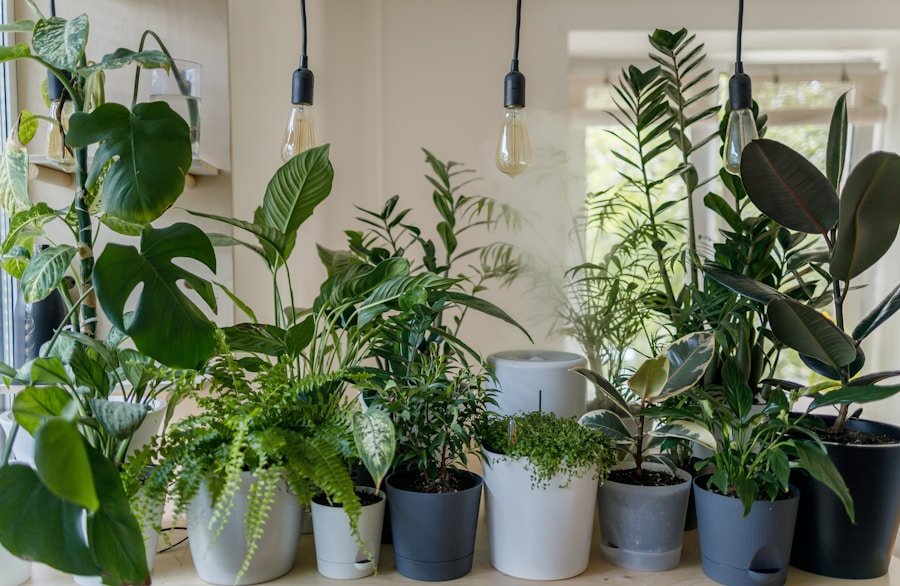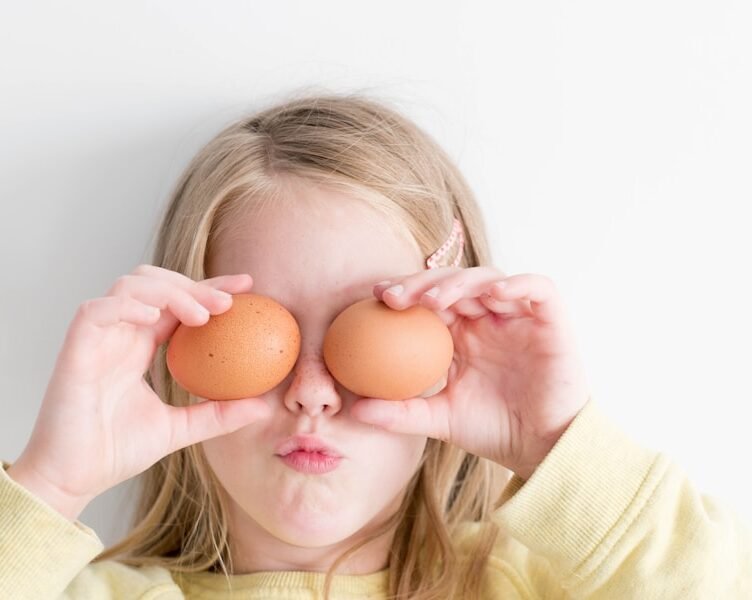Proper watering and drainage are essential for maintaining healthy hanging garden containers. Plants in hanging containers can rapidly become stressed and wilted if they do not receive adequate water. Regularly checking the soil moisture level and watering as needed, particularly during hot and dry weather, is crucial.
Moreover, it is vital to ensure that containers have adequate drainage to prevent water from accumulating at the bottom, which can lead to root rot and other problems. This can be achieved by incorporating drainage holes in the containers and using a well-draining potting mix. In addition to regular watering, it is also important to consider the specific water requirements of the plants in the hanging containers.
Different plants have varying water needs, with some requiring more frequent watering and others being more drought-tolerant. Researching the specific water requirements of the plants in your hanging containers and adjusting your watering schedule accordingly is essential. By paying attention to the watering needs of your plants and ensuring proper drainage, you can maintain healthy and thriving hanging garden containers.
Key Takeaways
- Regular watering and proper drainage are essential for maintaining hanging garden containers
- Pruning and deadheading help promote healthy growth and prevent overgrowth in hanging containers
- Fertilizing and soil maintenance are important for providing essential nutrients to the plants in hanging containers
- Pest and disease control measures should be taken to prevent damage to plants in hanging containers
- Choosing the right plants for hanging containers is crucial for their maintenance and overall health
Pruning and deadheading
Pruning and Deadheading: The Key to Success
Regular pruning and deadheading are essential aspects of maintaining hanging garden containers. Pruning promotes healthy growth and shapes the plants, while deadheading encourages continuous blooming and prevents energy waste on seed production.
Inspecting and Removing Dead Foliage
Regularly inspect your hanging containers for dead or damaged foliage, as well as spent flowers, and remove them as needed. This not only improves the appearance of the containers but also promotes overall plant health.
Pruning Techniques and Tools
When pruning plants in hanging containers, use sharp, clean tools to make clean cuts and avoid damaging the plants. Research the specific pruning needs of your plants, as different species may require different techniques. By regularly pruning and deadheading your hanging containers, you can maintain their health and appearance, encouraging continuous growth and blooming.
Fertilizing and soil maintenance
Fertilizing and soil maintenance are also important aspects of maintaining hanging garden containers. Over time, the nutrients in the potting mix can become depleted, so it’s important to regularly fertilize the plants in your hanging containers to ensure they have the nutrients they need for healthy growth. This can be achieved by using a balanced, water-soluble fertilizer according to the instructions on the label.
Additionally, it’s important to regularly inspect the soil in your hanging containers for any signs of compaction or depletion and refresh it as needed. In addition to fertilizing, it’s also important to consider the overall health of the soil in your hanging containers. This includes ensuring that the potting mix is well-draining and has good aeration, as well as monitoring for any signs of pests or diseases in the soil.
By regularly fertilizing and maintaining the soil in your hanging containers, you can help ensure that your plants have the nutrients they need for healthy growth and prevent issues related to poor soil health.
Pest and disease control
| Maintenance Task | Frequency |
|---|---|
| Watering | Regularly, when soil feels dry |
| Fertilizing | Every 2-4 weeks during growing season |
| Pruning | As needed to remove dead or overgrown foliage |
| Checking for Pests | Regularly, especially during warmer months |
| Soil Inspection | Periodically to ensure proper drainage and nutrients |
Pest and disease control are crucial aspects of maintaining hanging garden containers. Pests such as aphids, spider mites, and whiteflies can quickly infest plants in hanging containers, while diseases such as powdery mildew and root rot can also pose a threat. It’s important to regularly inspect the plants in your hanging containers for any signs of pests or diseases and take appropriate action to control them.
This may include using insecticidal soap or neem oil for pests, as well as removing and disposing of any infected plant material for diseases. In addition to controlling pests and diseases, it’s also important to consider preventative measures to help protect the plants in your hanging containers. This may include regularly cleaning and sanitizing the containers, as well as practicing good garden hygiene to prevent the spread of pests and diseases.
By staying vigilant and taking proactive measures to control pests and diseases, you can help maintain the health and vitality of your hanging garden containers.
Choosing the right plants for hanging containers
Choosing the right plants for hanging containers is essential for their long-term maintenance and success. Not all plants are suitable for growing in hanging containers, so it’s important to research and select plants that are well-suited for this type of environment. This may include considering factors such as light requirements, water needs, and overall size and growth habits.
Additionally, it’s important to consider how the plants will complement each other in terms of color, texture, and overall appearance. When selecting plants for hanging containers, it’s also important to consider their specific care requirements and how they will fit into your overall maintenance routine. Some plants may require more frequent watering or pruning, while others may be more low-maintenance.
By carefully selecting plants that are well-suited for hanging containers and considering their specific care needs, you can help ensure their long-term health and success.
Seasonal maintenance and care
Adjusting to Changing Weather Conditions
As the seasons change, the care needs of the plants in your hanging containers also change. This means adjusting your watering schedule based on changing weather conditions, such as providing more water during hot summer months and less during cool winter months. Additionally, you may need to provide extra protection for your plants during extreme temperatures or inclement weather.
Seasonal Tasks for Optimal Health
Seasonal maintenance tasks are crucial for the optimal health of your hanging garden containers. This includes repotting or refreshing the potting mix, as well as adjusting your fertilizing and pruning routines. By staying on top of these tasks, you can ensure that your plants receive the nutrients they need to thrive.
Considering Seasonal Interest and Color
The changing seasons can also impact the overall appearance of your hanging garden containers. To keep your containers looking their best, consider selecting plants that offer seasonal interest or color. This could include plants that bloom at different times of the year or have foliage that changes color with the seasons. By choosing plants that perform well throughout the year, you can create a beautiful and dynamic display.
Cleaning and maintenance of containers
Finally, cleaning and maintaining the containers themselves is an important aspect of overall maintenance for hanging garden containers. Over time, containers can become dirty or develop algae or mineral deposits on their surfaces, which can detract from their appearance and potentially impact plant health. It’s important to regularly clean and maintain the containers by scrubbing them with a mild detergent or vinegar solution, as well as periodically inspecting them for any signs of wear or damage.
In addition to cleaning, it’s also important to consider any maintenance needs for the containers themselves. This may include checking for any signs of rust or corrosion on metal containers, as well as inspecting plastic or resin containers for any signs of cracking or fading. By regularly cleaning and maintaining the containers themselves, you can help ensure that they continue to provide a healthy and attractive environment for your plants.
In conclusion, maintaining hanging garden containers requires attention to a variety of factors including regular watering and drainage, pruning and deadheading, fertilizing and soil maintenance, pest and disease control, choosing the right plants for hanging containers, seasonal maintenance and care, as well as cleaning and maintenance of containers themselves. By staying attuned to these various aspects of maintenance, you can help ensure that your hanging garden containers continue to thrive and provide beauty year-round. With proper care and attention, hanging garden containers can be a beautiful addition to any outdoor space.
FAQs
What are hanging garden containers?
Hanging garden containers are containers specifically designed to be hung from a support structure, such as a hook or railing, to allow for vertical gardening. They are often used to grow flowers, herbs, or small vegetables in limited space.
How can hanging garden containers be maintained?
Hanging garden containers can be maintained by regularly watering the plants, ensuring proper drainage, and providing adequate sunlight. It is also important to regularly check for pests and diseases, and to prune and fertilize the plants as needed.
What are some tips for maintaining hanging garden containers?
Some tips for maintaining hanging garden containers include using a lightweight potting mix to reduce the overall weight of the container, choosing plants that are suitable for the specific growing conditions, and regularly deadheading and removing any dead or yellowing leaves.
How often should hanging garden containers be watered?
The frequency of watering hanging garden containers will depend on factors such as the type of plants, the size of the container, and the environmental conditions. In general, it is important to water the containers when the top inch of soil feels dry to the touch.
What are some common problems with maintaining hanging garden containers?
Common problems with maintaining hanging garden containers include overwatering or underwatering, inadequate sunlight, pest infestations, and nutrient deficiencies. It is important to regularly monitor the health of the plants and address any issues promptly.






